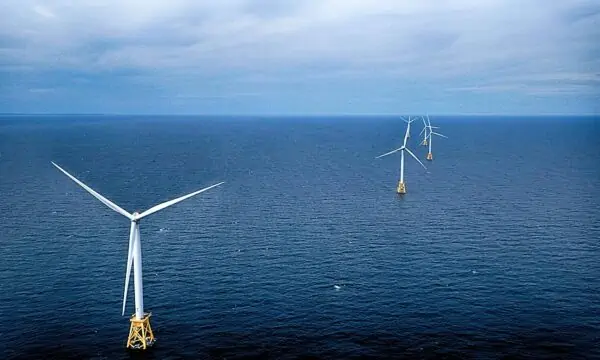
iXblue has confirmed that its SeapiX 3D volume sonar has been tested by NOAA NEFSC (Northeast Fisheries Science Center) in the Block Island windfarm off the coast of Rhode Island. Block Island is the first commercial offshore wind farm in the United States, and the objective of the evaluation was to observe and monitor the pelagic zone ecosystem, which is often overshadowed by the demersal and benthic communities in the windfarm areas.
As offshore wind farms will soon be an important component of the New England and mid-Atlantic seascape, novel methods to survey and monitor the animals that reside or migrate through these areas will become necessary as they are a critical component of the life history of many commercially and ecologically important species. Moreover, limited capability to physically sample the biota with capture gear in and around offshore wind farms will necessitate using alternative sensing solutions to monitor the pelagic ecosystem. Active acoustic technologies like iXblue’s SeapiX 3D volume sonar can survey large areas quickly and efficiently to map spatiotemporal distributions and estimate abundance and biomass.
SeapiX is a compact civilian sonar system that incorporates a dual Mills Cross multibeam sonar transducer and provides complete control for fishermen and fisheries researchers. Its transducer generates several simultaneous multibeam transmissions and acoustic processes to yield quantitatively and qualitatively impressive measurements of the marine environment. The solid-state 3D multibeam sonar, which operates at 150 kHz, brings new insights to the scientific community for the evaluation and the monitoring of marine environments and can provide real-time full 3D biomass assessment. It can be integrated into both USVs (unmanned surface vessels) and manned vessels.
Guillaume Matte, R&D manager for SeapiX at iXblue, commented: “It was a fantastic opportunity to run these tests together with NOAA experts. Marine Renewable energy installations require specific biomass assessment surveys to qualify impact, and we believe that Seapix adds a real value to this application. It offers a more insightful experience for fish detection and mapping and provide valuable information on fish behavior as well. We are grateful to the NOAA fishery scientists on-board during this survey for discerning conversations and for sharing their enthusiasm about SeapiX.”










